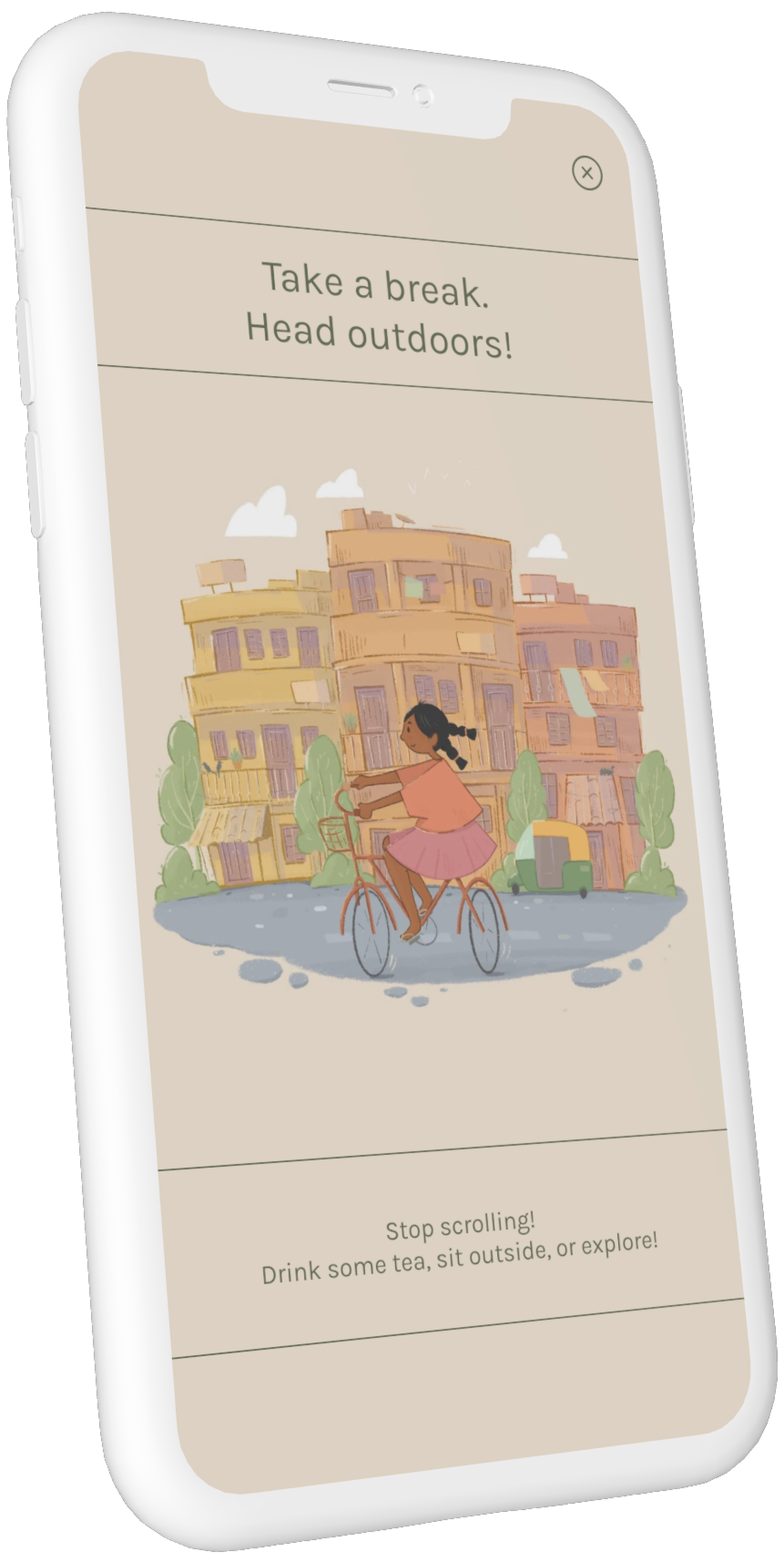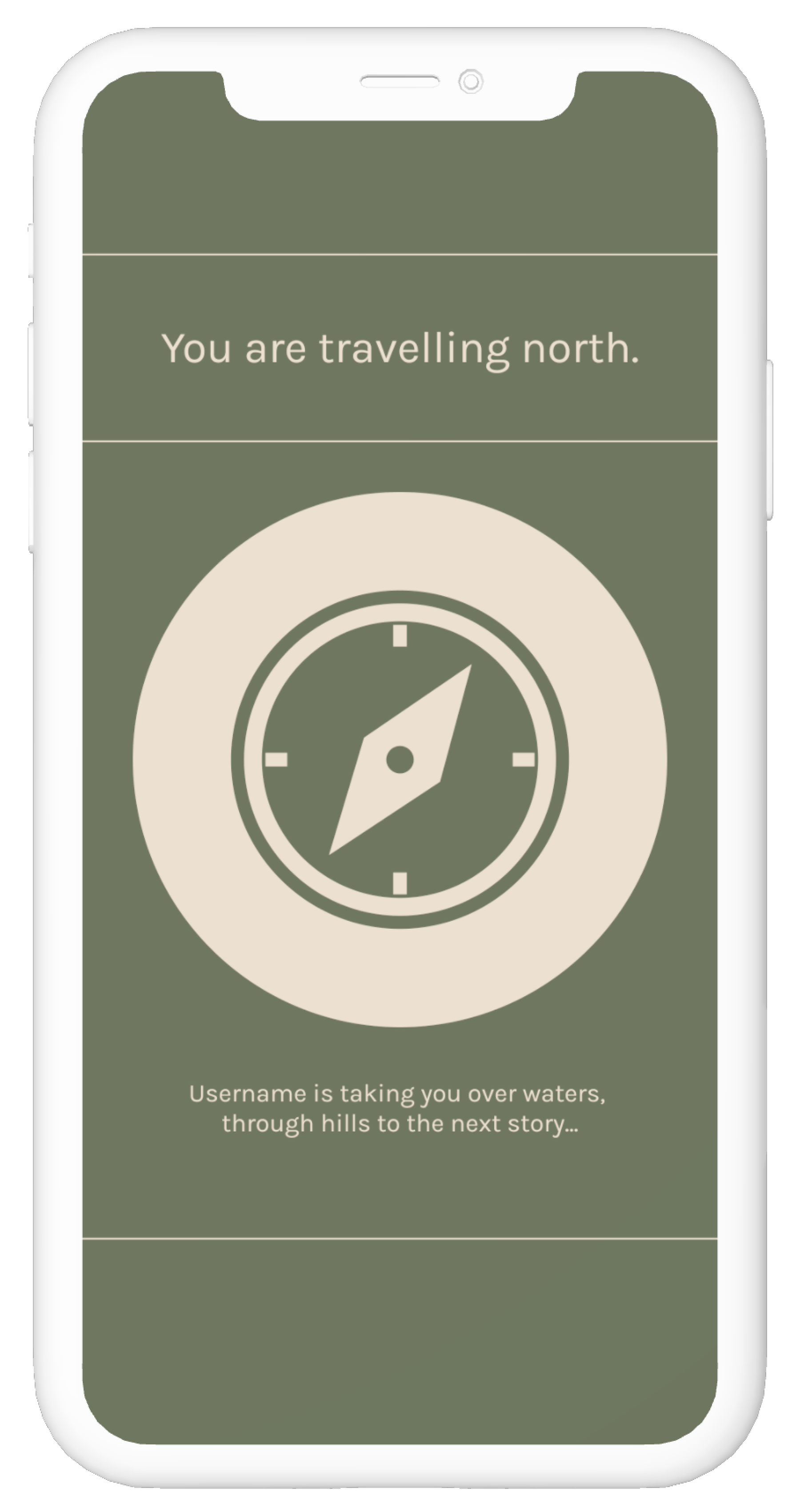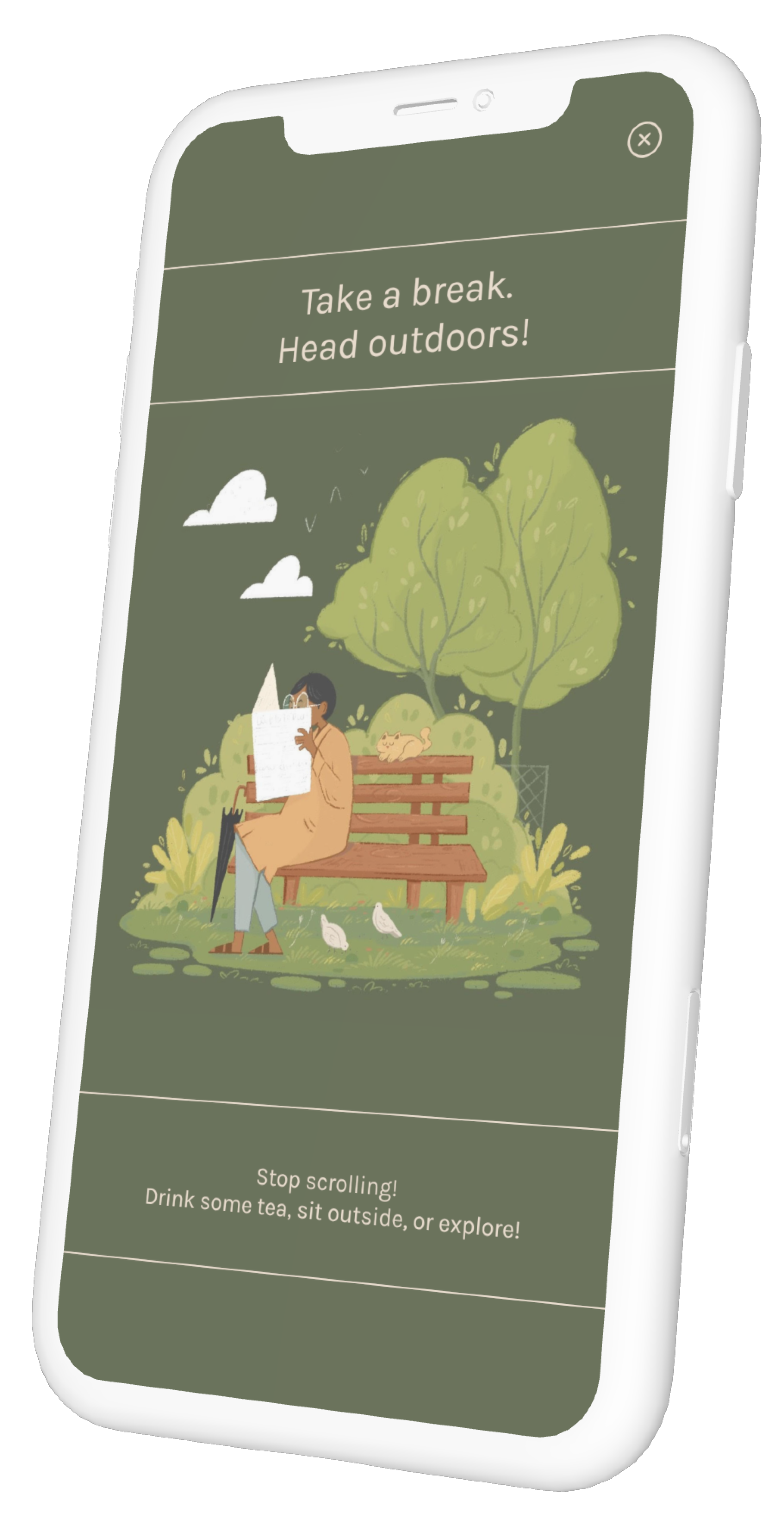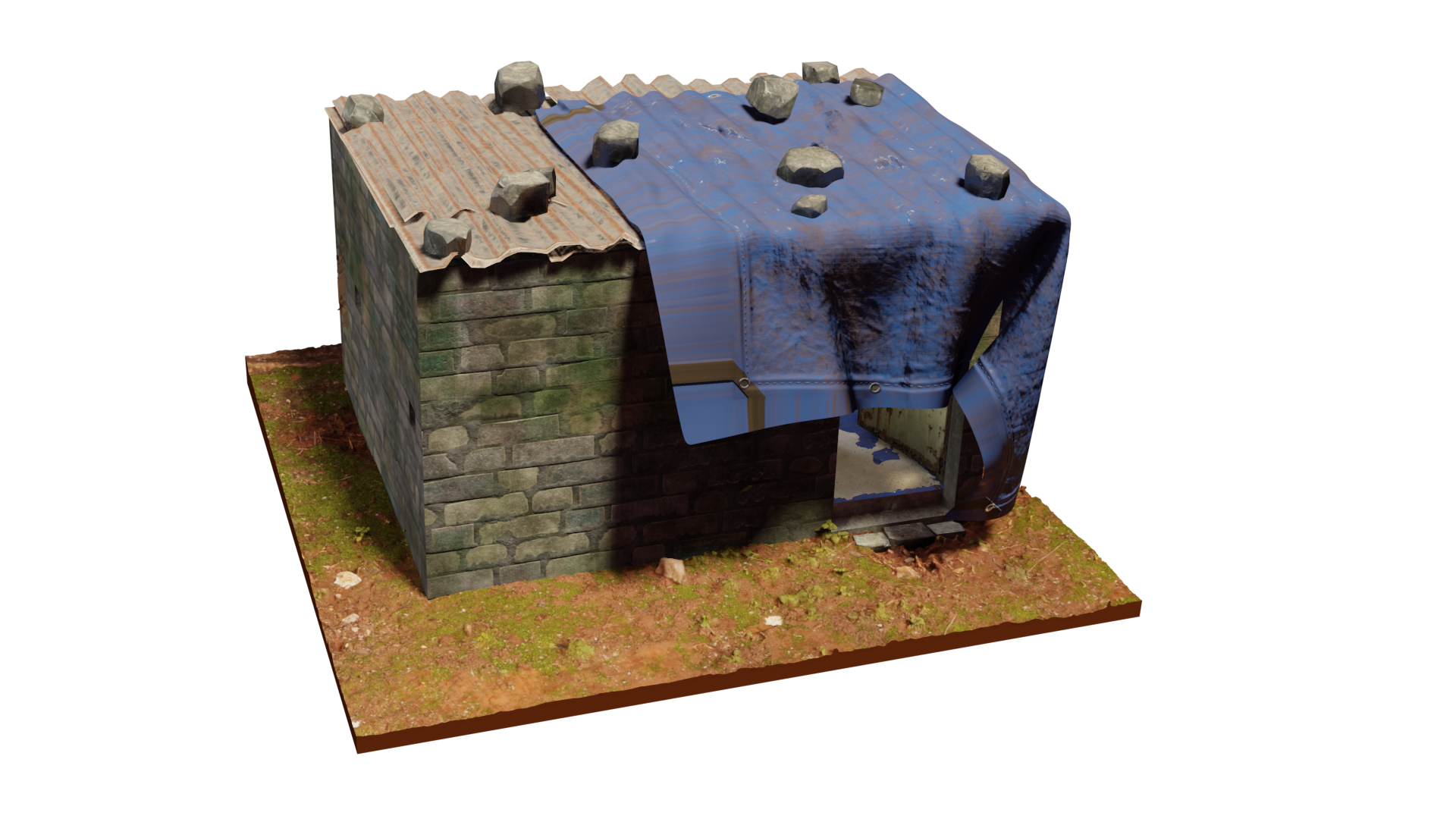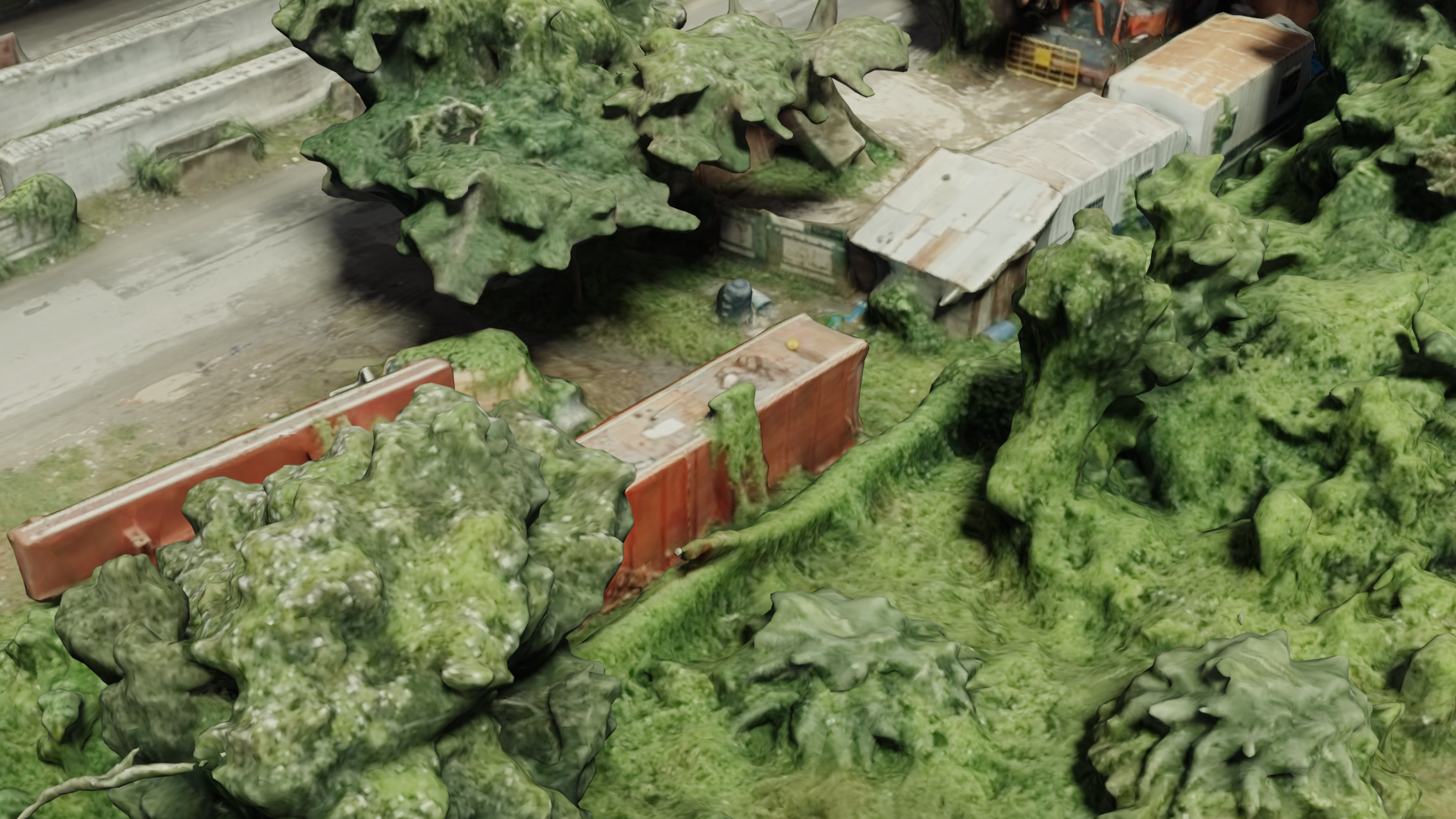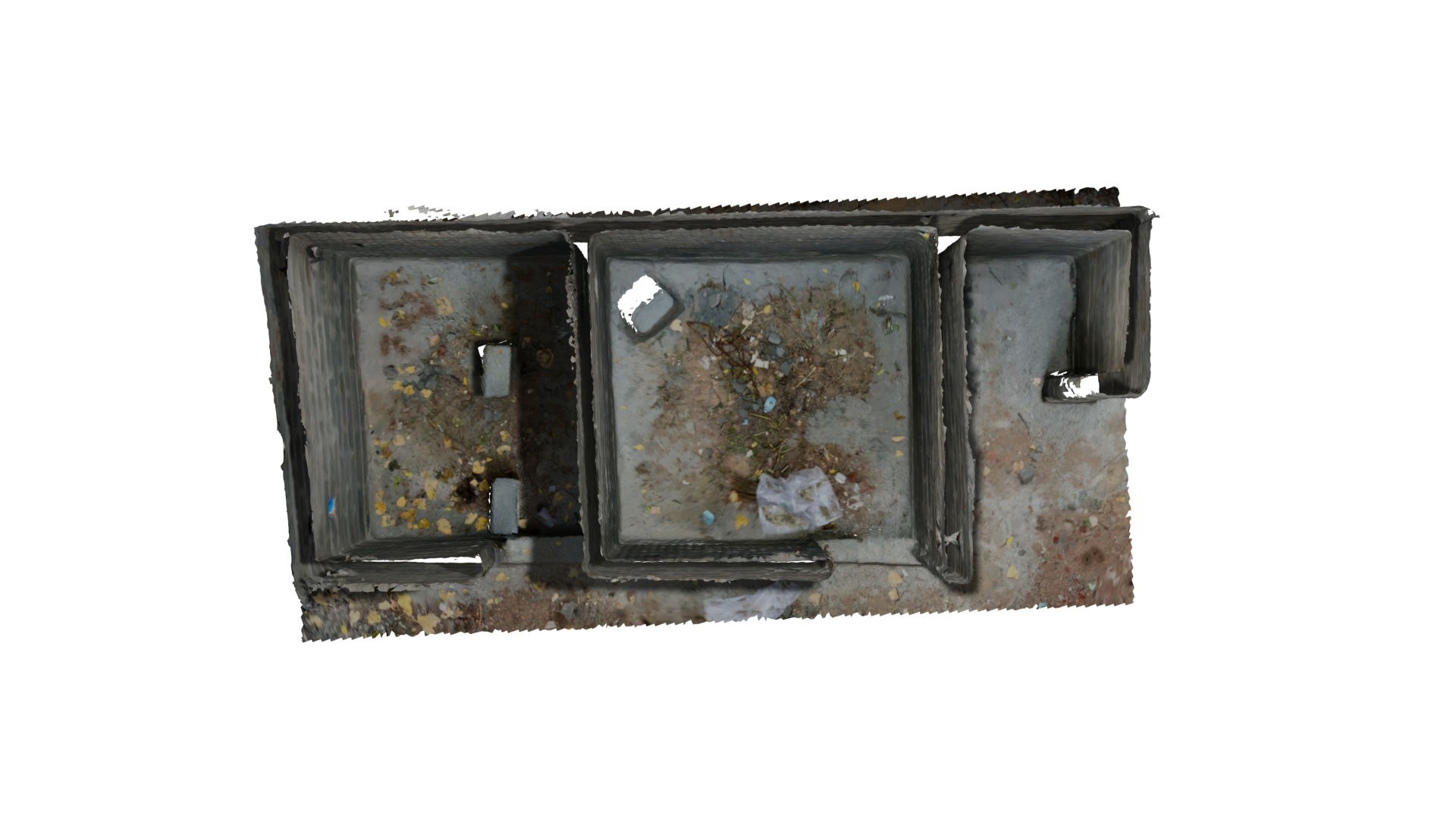Nurturing Memory (On-going)
Video game on anticipating grief
In anticipation of grief, I have begun to memorialize my grandmother. The deterioration of her health due to dementia forces me to question how I would like to remember her. While I ponder this question, all I can think of are how her hands, now wrinkled, raised a family using her lived experiences. Through recorded conversations, photogrammetry, and interaction, I intend to revisit the way she has spent her life nurturing plants and people. This garden of memories mimics how she tends to her garden, with care and touch. As the plants sprout, blossom, and wither, her stories share snippets of her life.
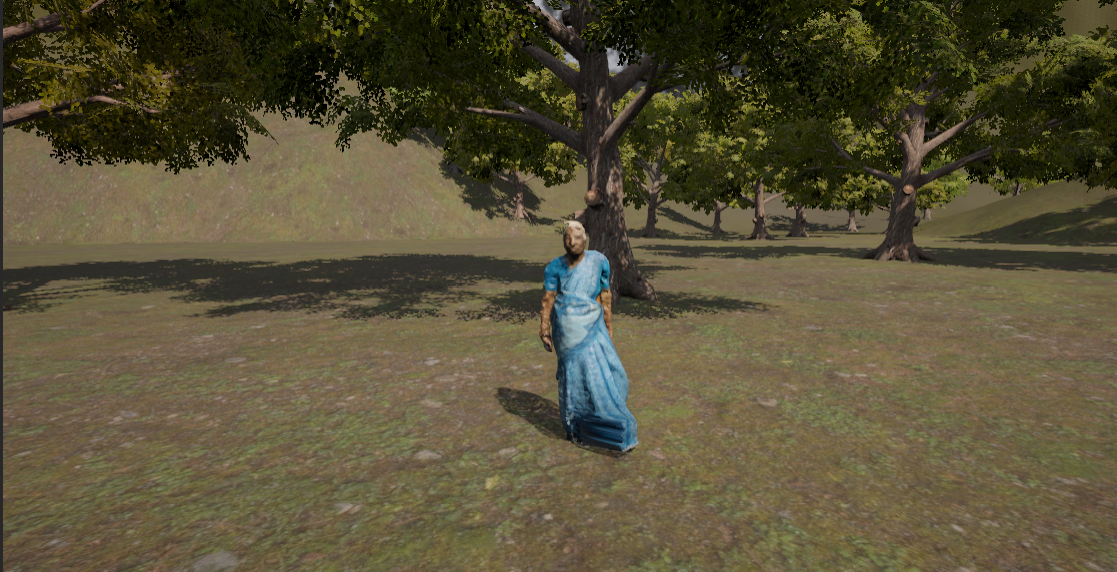

Screenshot: Environment and modeling in progress
Context:
Kamala (Sridharan) is a 97-year-old Indian woman living in Bangalore, Karnataka, India. Her home, though, was previously in Kumarakom, Ballari, Chennai, Mumbai, Hyderabad, Chennai, and finally, in Bangalore. Much of her life was shaped by her role in her immediate family. I believe that making a garden was some sort of solace to her. I would like to build this piece for her so she can garden again. I have created a simple prototype in unity that has her walking through this garden. Furthermore, I have collected motion capture data to realistically depict her movement and interaction with plants.
The first arc of the project is an interactive game focused on depicting aspects of dementia and memory deterioration.
The second arc follows the story of three caregivers and their personal experiences around anticipated grief of losing family members. The third and final arc requires the participation of the audience in sharing similar stories through audio recordings.
Video: Work-in-progress of video game; Cutscene introduction to video game
Only Love Will Save Us
Immersive video installationTeam: Dror Margalit, Mary Mark , and Neeti Sivakumar
Exhibited at
NYU ITP Winter Show, 2022
Today, people across the world continue to fight for basic human rights. Brave individuals lead and inspire protest movements, in many cases risking their freedom and lives for speaking out. “Only Love Will Save Us” is an immersive video installation that tells the story of Maria Kalesnikava, one of the three women who, in the summer of 2020, led the protest movement against longtime Belarusian dictator Alexander Lukashenko after he rigged the presidential election in his favor.
Photograph: Stills of exhibit at NYU ITP Winter Show 2022
Context: This piece is a tribute to Maria and other political prisoners who sacrificed their freedom to retain their voice and stand up to dictatorships. Shortly after the elections in Belarus, Maria was unjustly imprisoned and is now serving an 11-year sentence. In this interactive installation, one person needs to temporarily ‘sacrifice’ their freedom to amplify and tell Maria’s story. They volunteer to go inside of a human-sized box, representing a jail cell, where they have to stay for a period of ~2 minutes so that people on the outside can hear and see Maria’s story. When the person is inside, an animation is projected on the outside of the box for the rest of the audience to see. Inside of the box, the voluntarily confined person can explore information, quotes and news articles pasted on the walls about Maria Kalesnikava and the opposition movementment in Belarus. This piece was first exhibited at the ITP Winter Show in December 2022.
The video that is projected on the outside of the box includes excerpts of Maria’s various speeches accompanied by an animation captured with Motion Capture and rendered in Unity (full video shown below). Throughout the story, Maria’s talks about the government’s attempts to turn people against each other through violence and imprisonment; she also urges people not to give into aggression, to support and love each other, and to rebuild the country with legal and peaceful means. The animation shows a person (i.e., a point cloud figure) who starts in a jail cell, but then walks out into a field of flowers (symbolic for Belarusian protesters). The animation ends with the figure back in the jail cell that is now covered with flowers – a symbol for Maria’s message and a shift of perspective in people’s minds.
Photograph: Stills of exhibit at NYU ITP Winter Show 2022
Video: Immersive video installation, Music Credit: Gold by Florent Ghys
The Reading Room
Web-platform for location-based storytellingWebsite (in development)
Role: Founder
Team: Neeti Sivakumar, Anushka Trivedi, Ishwari Arambam, Oshin Padhye, George Panicker, Shreya Pidikiti
Supported by
Goethe-Institut, BeFantastic, ZKM Karlsruhe
Storiculture
Exhibited at
C3: Coding, Creativity, Communities Exhibition
The Reading Room is a collaborative storytelling project that enables us to think of place differently. It received two rounds of grants from Goethe Institut’s ‘C3: Coding, Creativity, Communities’ grant. Through storytelling, we can take the initiative of re-defining a place beyond its history and geography.
As makers of place, stories can be drawn from lived-experiences or personal encounters. The Reading Room is home to all stories — from places without names on a map to segregated and integrated places, of places you wish you’d gone to or hadn’t, or the farthest you go in a day.
The Reading Room works as a dialogue between storytellers and their listeners. The experience of a story will create conversations, trigger thoughts, and make meaningful connections.
As makers of place, stories can be drawn from lived-experiences or personal encounters. The Reading Room is home to all stories — from places without names on a map to segregated and integrated places, of places you wish you’d gone to or hadn’t, or the farthest you go in a day.
The Reading Room works as a dialogue between storytellers and their listeners. The experience of a story will create conversations, trigger thoughts, and make meaningful connections.



Screenshots: Lite version landing screen; Adventure version landing screen; Outdoors version landing screen
Design: The work consists of three versions to experience these stories -
Lite - A simple listed version of all the stories with a search function. Readers can filter based on location so as to learn more about a place.
Adventure - A choose your adventure experience that is built by the audience. The version relies on building bridges between stories and making connections between readers and storytellers in order. It begins to explore the possibility of slow media by introducing break screens so the audience can head outside.
Outdoors - This is a geolocative sound-based experience that helps storytellers share ‘voice notes’ at particular locations. They become hotspots to experience reality through other perspectives.
Through an initial survey, the team discovered that the pandemic had reduced the time most people spent outdoors, even alone. There was no appeal to exploring and wandering in a city. As a result, we developed multiple versions of the website to explore the possibilities of interacting with content creation about locations. For example, in the Adventure version, the experience embodied the physicality of how we navigate space - strolling, turning corners, eavesdropping - through familiar digital interactions - scrolling, hyperlinking, bookmarking/search history. The cyber flaneur could travel during times of isolation across these imagined realities.
Screenshots: Transition between stories (a compass that calculates the direction in which you are travelling based on the location data gathered from the stories); Break screens offering readers relief intermittently
The Reading Room is a work in progress. The website currently consists of a text editor/publisher, map builder, hyperlink generator, search/filter, account/profile and login via magiclink generator, so on.
Below are two videos of guest and user walkthrough of the website.
Screenshots: Walkthrough of beta version as a guest user; Walkthrough of beta version signed in
Live-in Labourers
Conditions of construction
The project is aimed at documenting construction workers' living conditions in Bangalore, India, through alternative documentary techniques. Using techniques like photogrammetry and aerial photography, sites were documented and compared to norms defined by the government.
Aerial Photograph: Construction Workers’ Settlement Crates
Context: On 25th March 2020, the government of India ordered a complete lockdown in light of the Covid-19 pandemic. For the first time the conditions of the migrant labourers were in the spotlight. A few months later, in the month of May, Bangalore's state government suspended construction work. In protest, workers declared a march back to their home towns but there was no other option, with the lack of money and food.
Live-in Labourers is a piece highlighting current spatial conditions as of September 2021. In order to situate the project within the construction industry, the project begins with an interactive model that draws from labour laws in order to understand the systemic treatment of migrant workers. There is a clear distance between paper and current conditions, this project maps a comparative study of 3D modelling of sanitized standards and existing conditions.
Interactive Model: Norms for Living Conditions

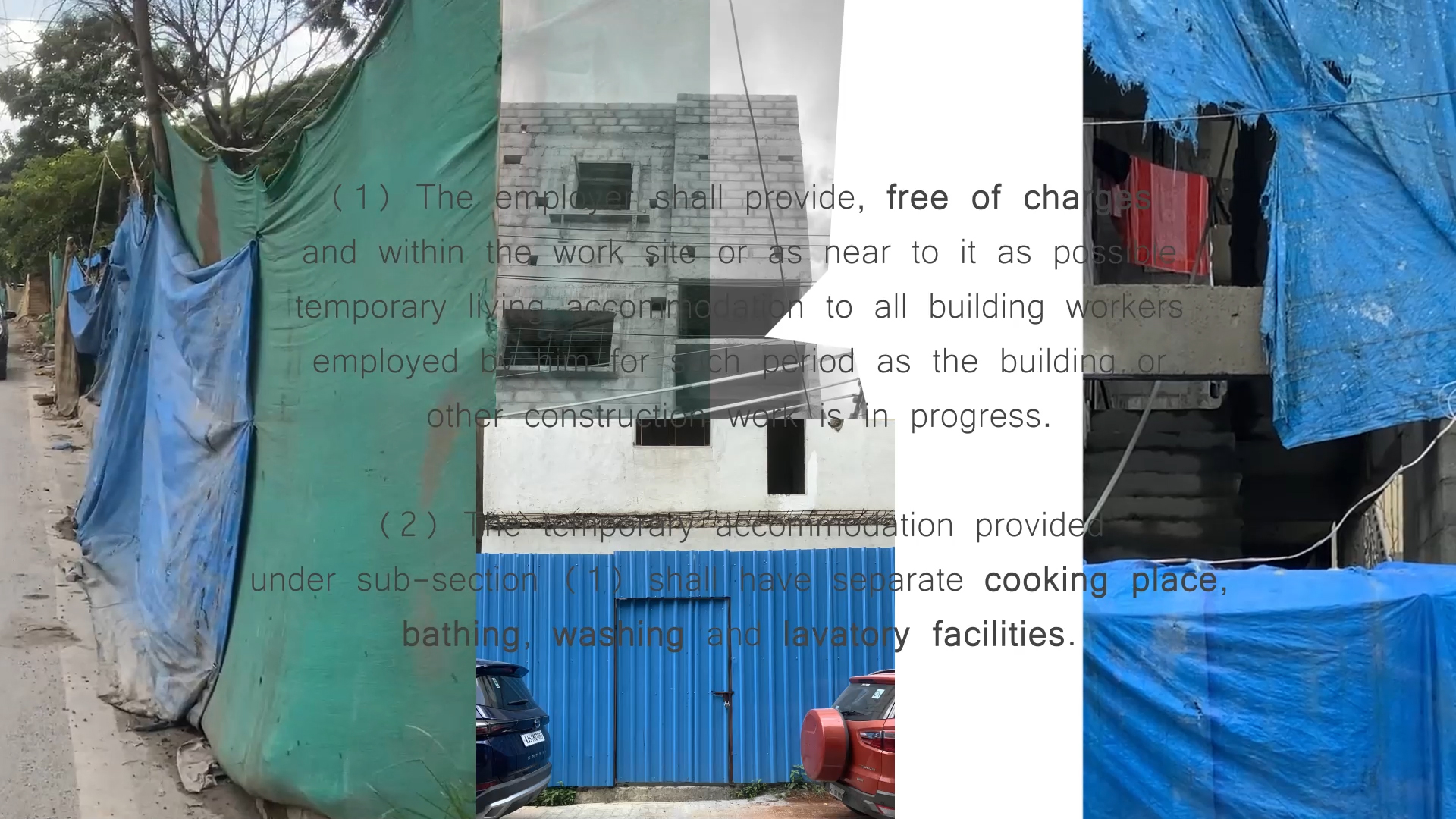
 Video Stills and Drawings: Documenting On-site Conditions
Video Stills and Drawings: Documenting On-site Conditions
Through fieldwork, the project situates itself both at the scale of an individual and the city. Construction is a permanent occurrence and typically takes place in neighborhoods that are still developing.
Using on-site footage, architectural drawings, 3D modelling, and photogrammetry, certain socio-political conditions have been highlighted.
Photogrammetry Fieldwork: Documenting On-site Conditions
Observations: It is clear that there are set patterns in the layout of houses, however, these are rarely constructed by the workers on ground. Each house, built with fly-ash concrete blocks and corrugated sheets, takes a total of 2-days to construct. Instead, mostly makeshift houses are constructed with corrugated, plywood boards, tarpaulin, and rope.
Conclusion: The agenda of this project is to highlight construction within our neighbourhoods, streets, and our homes so as to instigate a sense of care and responsibility among disconnected classes towards the conditions of construction workers, a series of works were produced to re-introduce them as 'neighbours'.
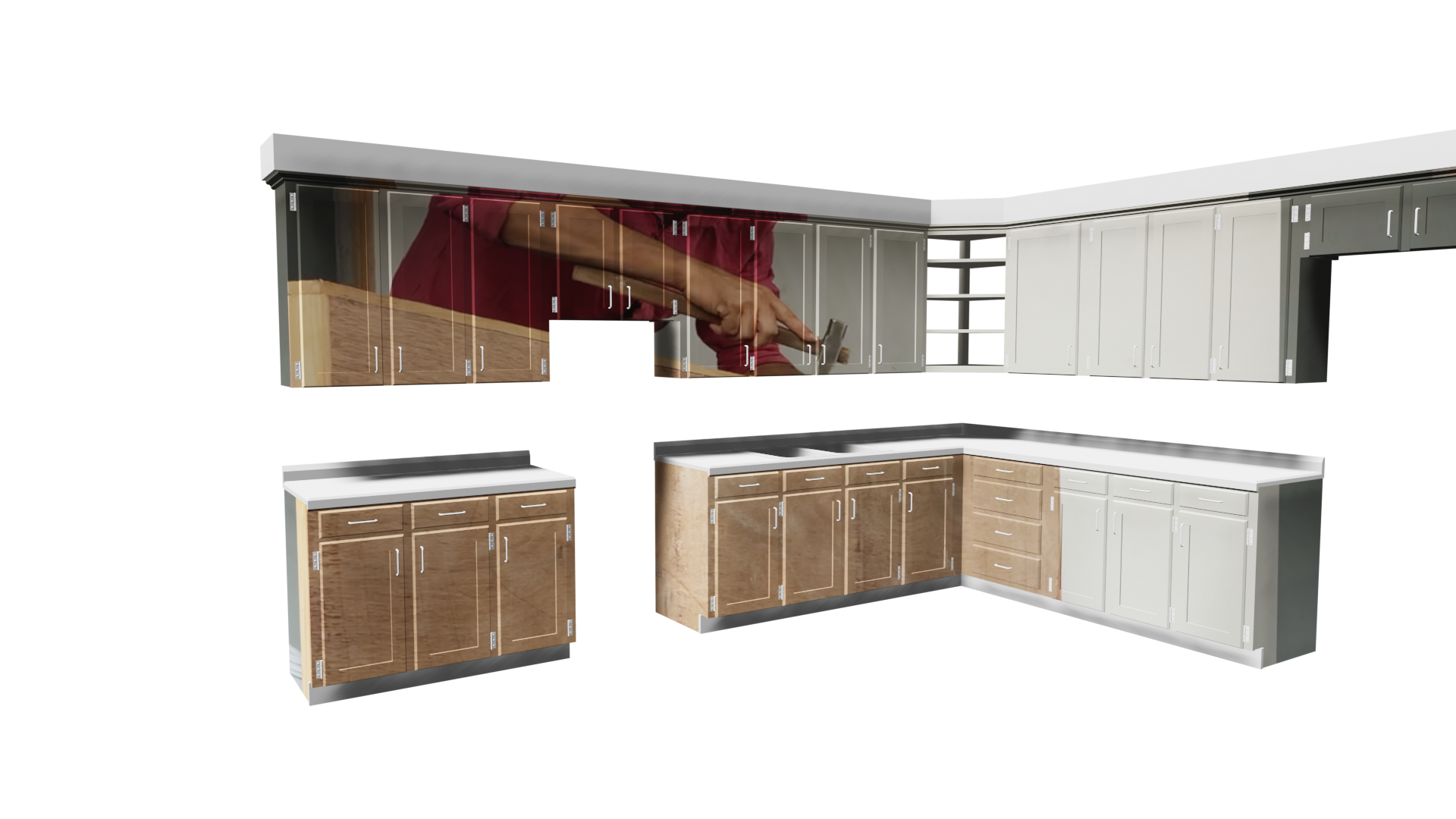

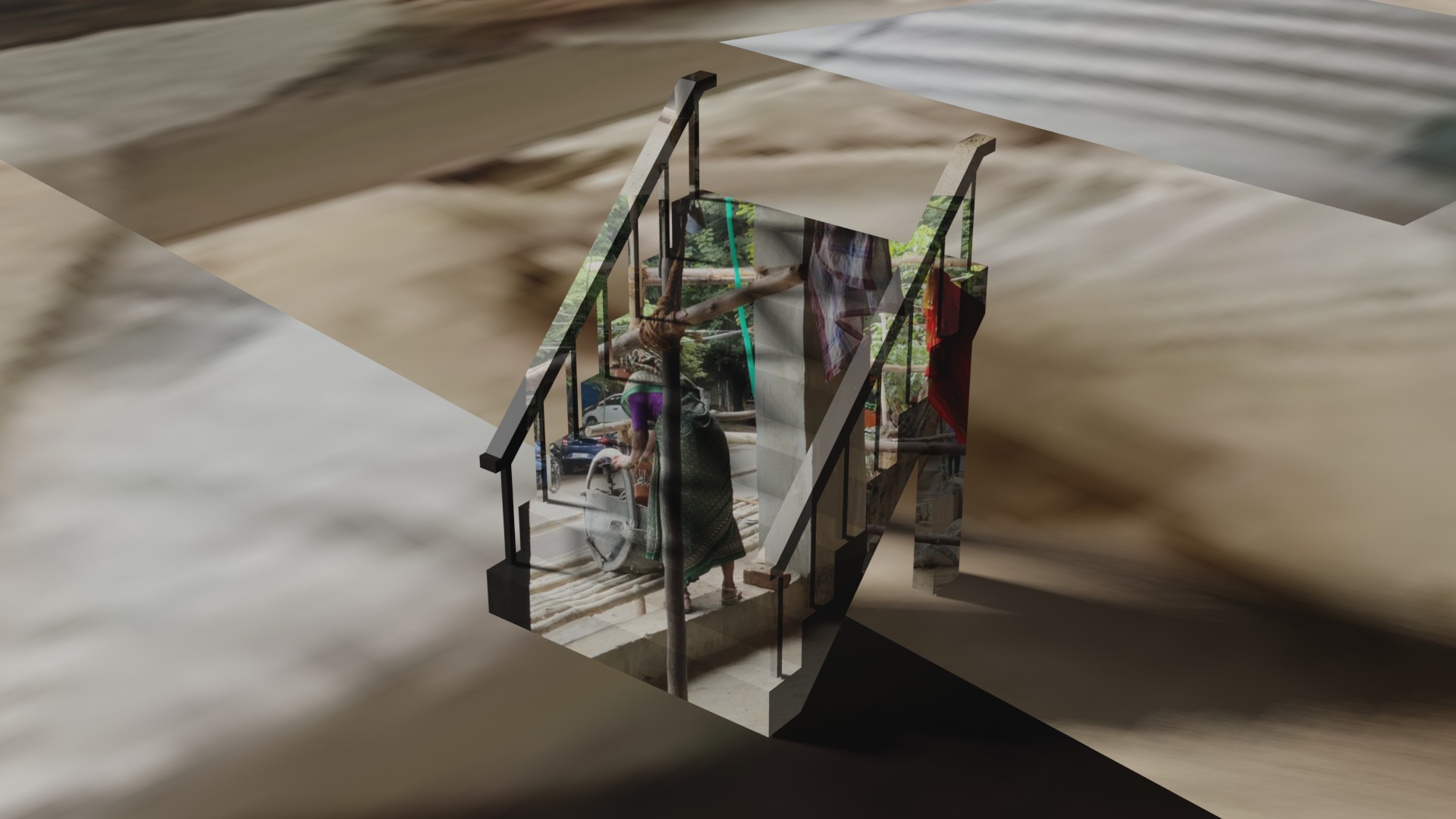
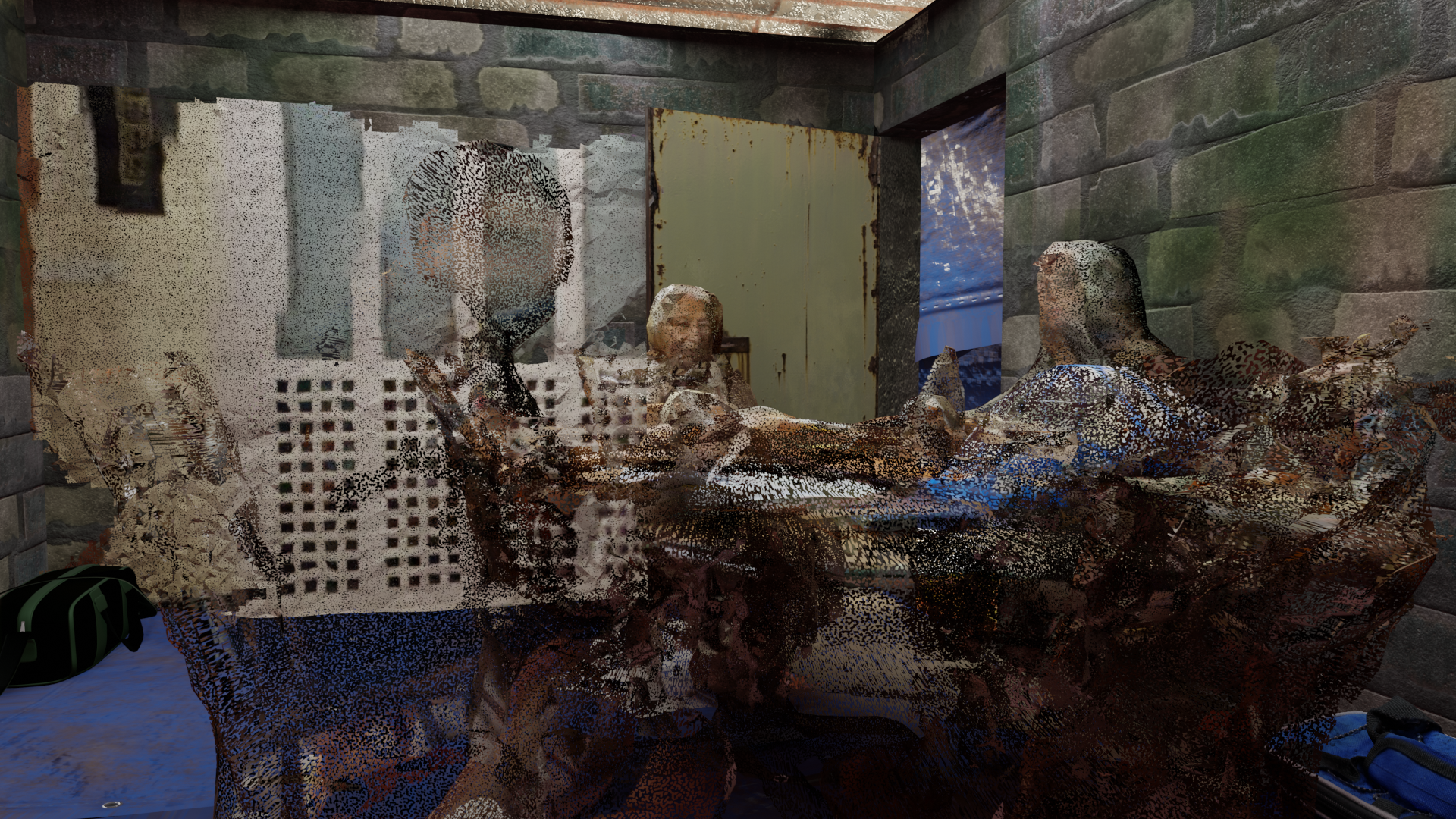
Video Stills and Renders: Projections on Domesticity
How was your house constructed and in what conditions?
Through projections over domestic spaces and elements, redefine them through the time and labour spent in making these spaces.
Through projections over domestic spaces and elements, redefine them through the time and labour spent in making these spaces.
Walk around your house
Look for the imperfections
Some yours, some not
Your house has past lives
You are one of them
Look for the imperfections
Some yours, some not
Your house has past lives
You are one of them
Step out of your house
Find the neighbour
who lives in an incomplete home
Step over the wet cement
Ask them where they're from
Find the neighbour
who lives in an incomplete home
Step over the wet cement
Ask them where they're from
Video: Toolkit for Sharing Spaces
Kāykari Kaaran
Pronounced Kaigari KaaranMapping the route of vegetables
The project is aimed at surveying the everyday street vendor. As vendors are an integral part of the informal distribution system, more so due to the pandemic, it is important to establish an understanding of the economic and infrastructural network that shapes their livelihood. The project was initially developed during Budapest's AA Visiting School. Open-source mapping techniques and on-ground interviews helped document specific problem points.
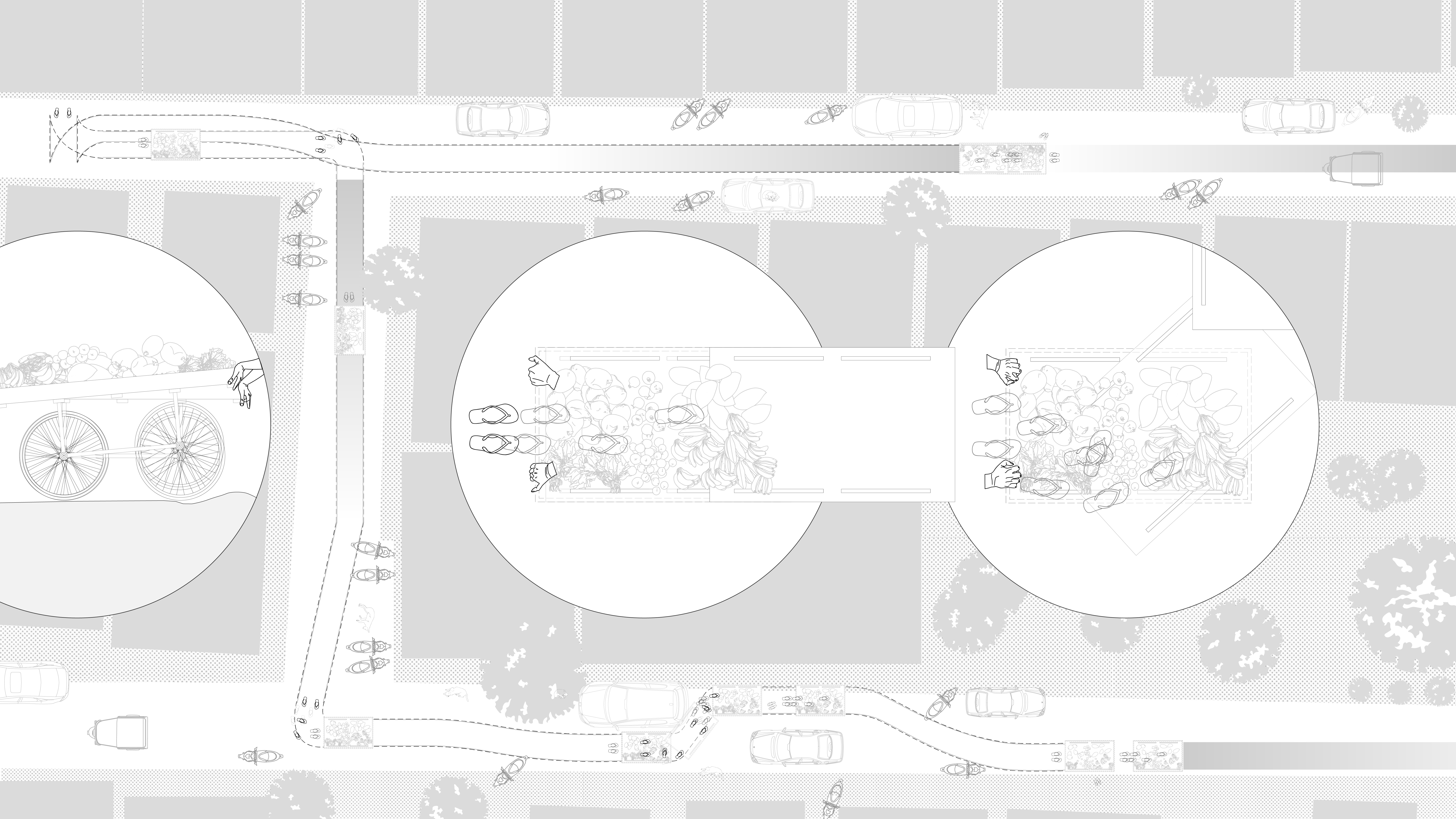
Drawing: Neighbourhood Level Activity Plan
Context: In 2014, a Street Vendors (Protection of Livelihoods and Regulation) Act was passed. Every vendor must be issued a license and be allocated certain area. However, the rules of the act have not yet been devised in certain areas within the state of Karnataka leaving vendors vulnerable to harassment and forced payouts by the local police although, they cannot be displaced for any reason due to this.
Kaygari Kaaran is a project that looks at the relationship of the vendor, his pushcart and the street. Through a series of architectural drawings, the gesture, movement, and the typical setup are documented.
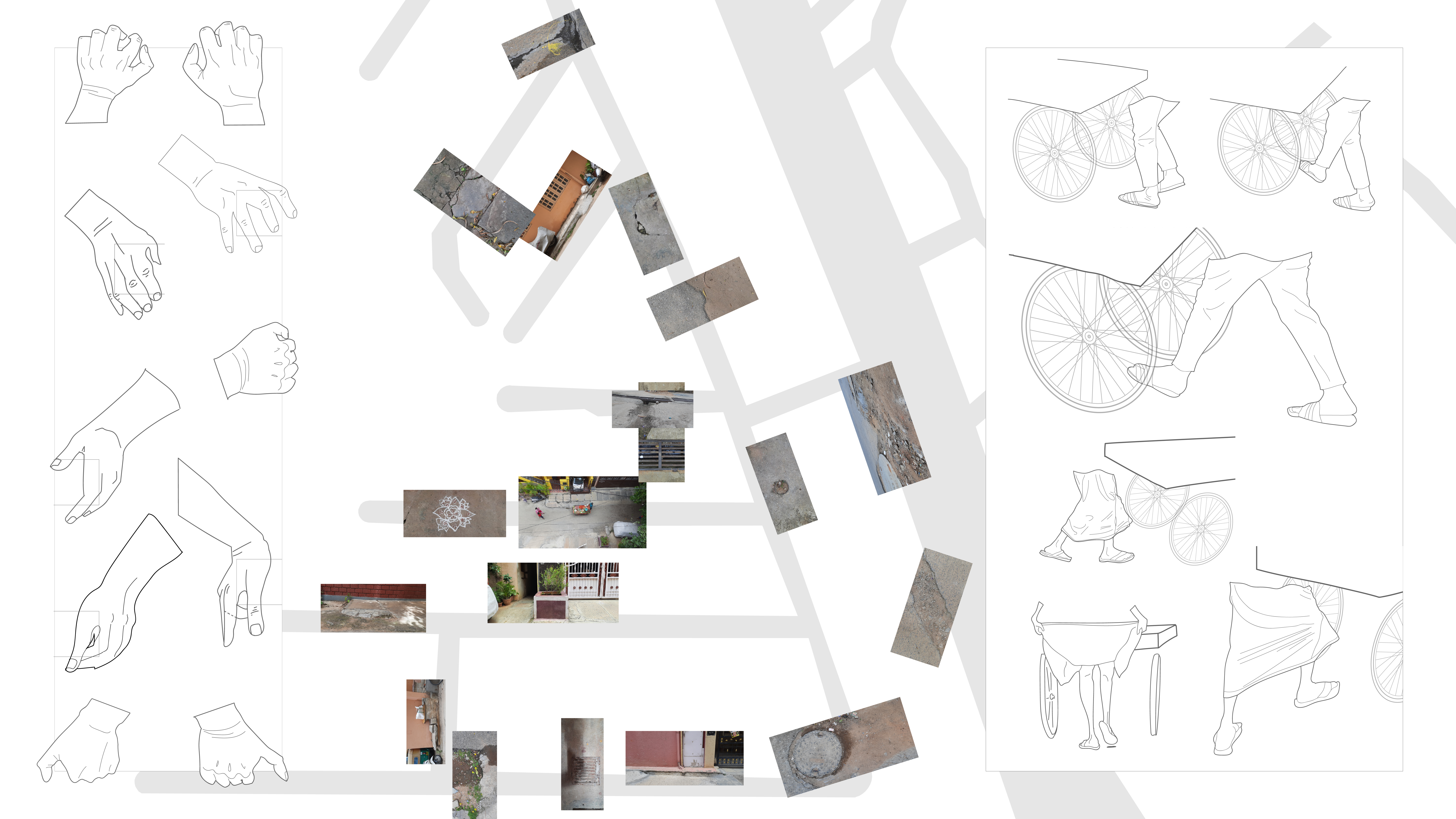
Drawing:
Movement of the vendor with his cart (Pushing, Lifting, and Turning)
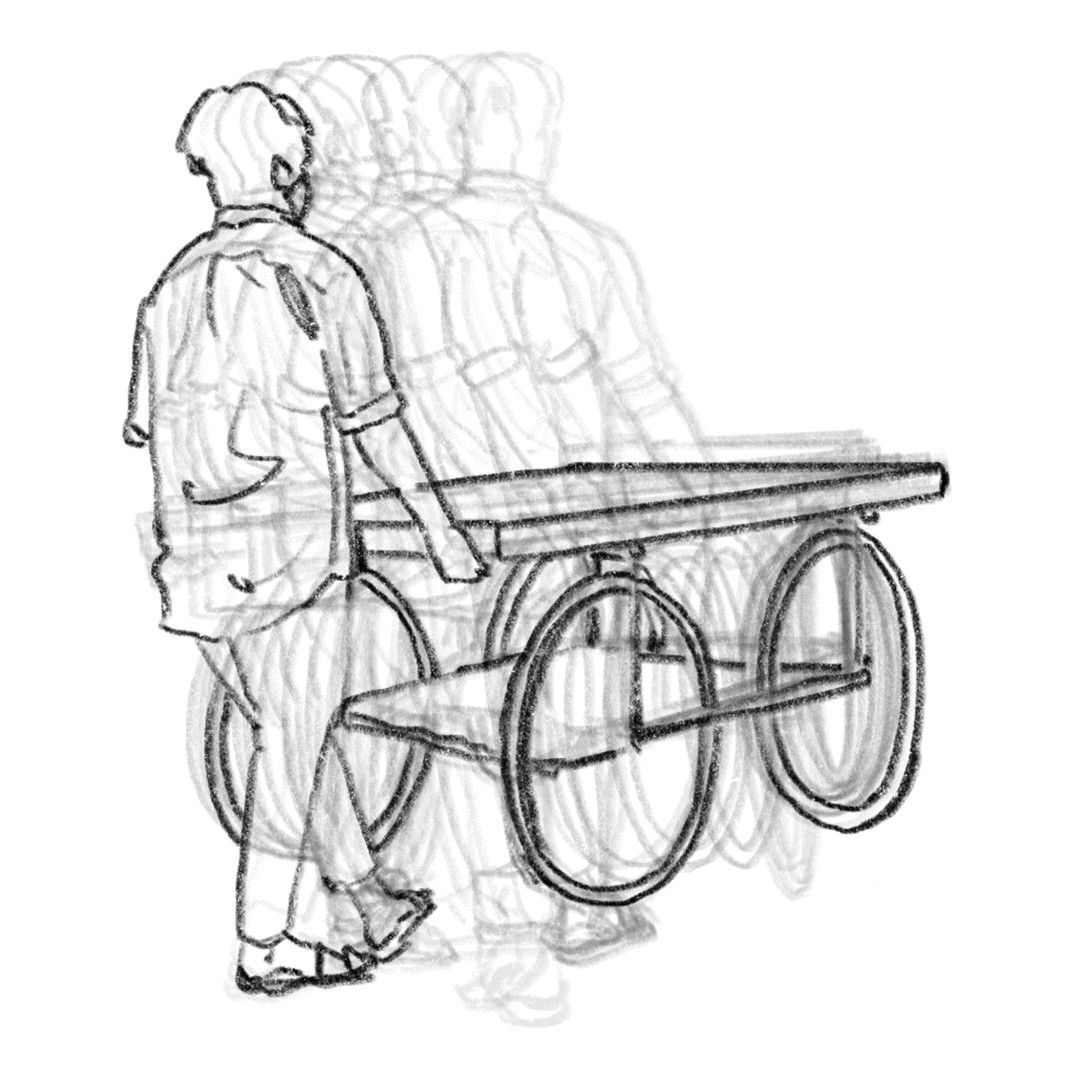
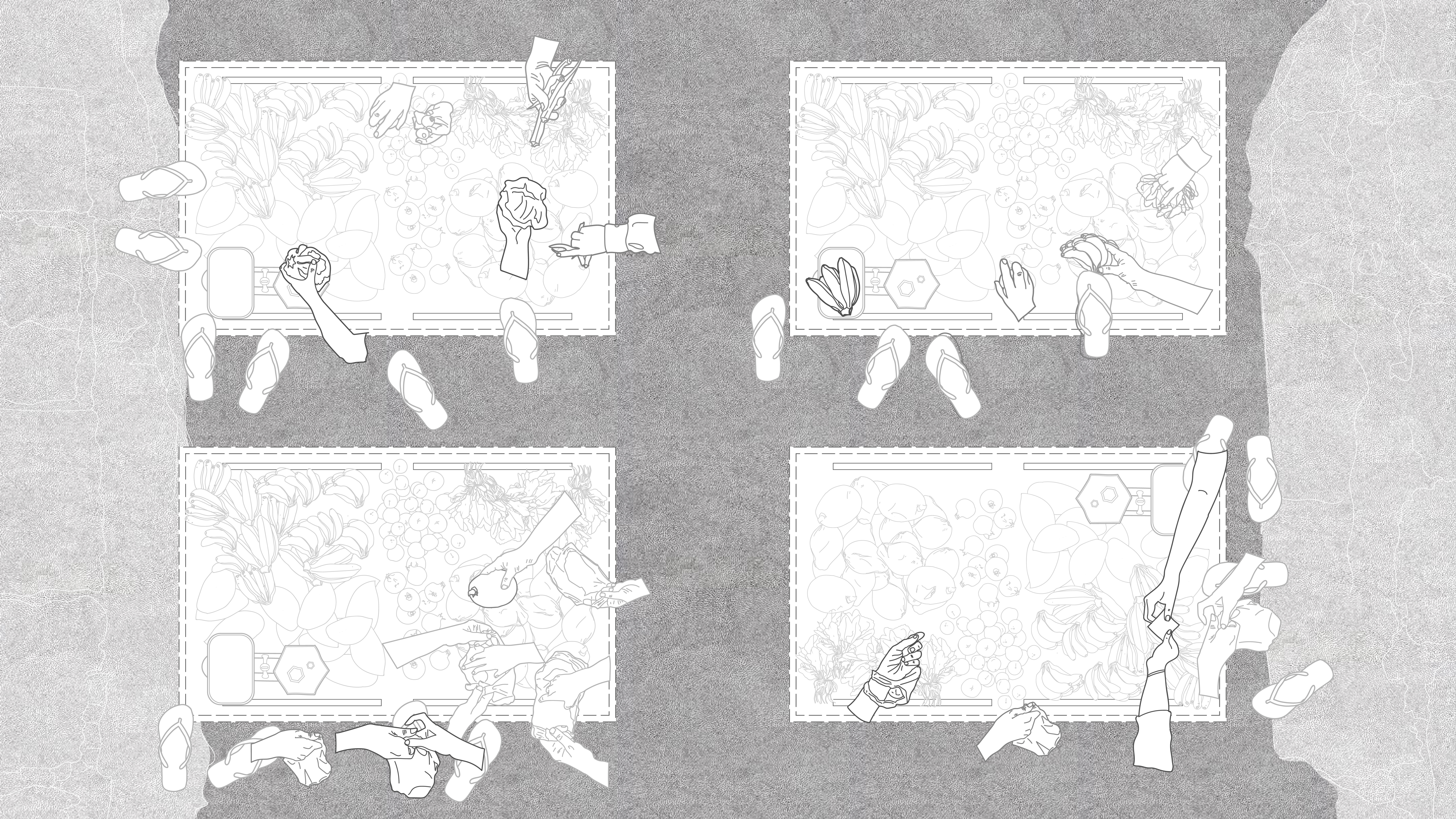
Drawing: I
nteractions over the cart
Observations: Moving vendors typically have a hard time in certain neighbourhoods due to traffic and road conditions. There is a set routine they follow everyday in order to purchase vegetables in wholesale markets and sell them. This can be disturbed due to the climate and external forces like the police. Wages differ from day-to-day and due to the ripening of food related items.
Permanent vendors face more police related issues and theft of objects from their setup. They position themselves favourably, in a visible spot within a locality for better business. A large number of objects come from construction material or second-hand objects appropriated.
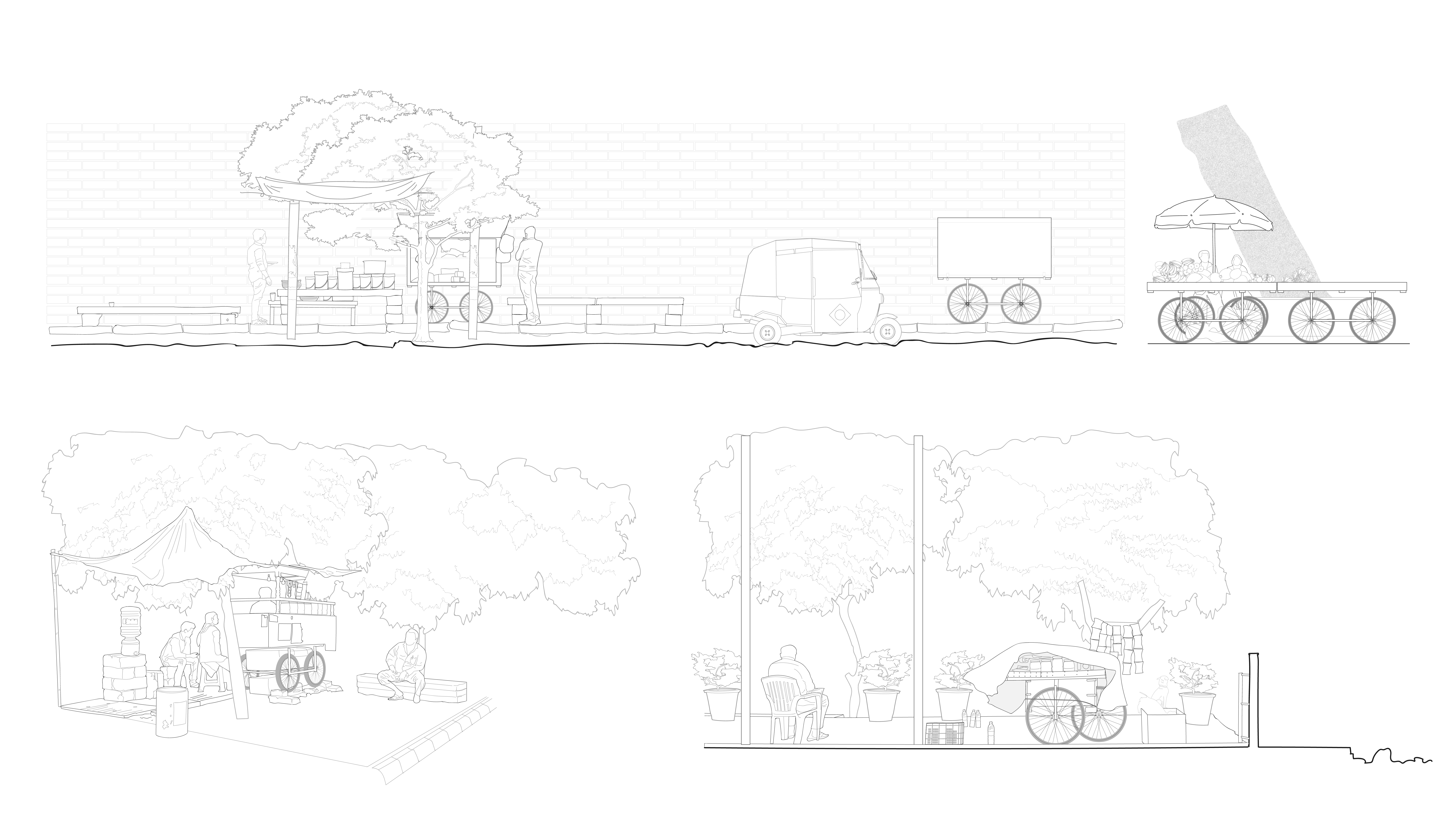
Drawing: Documenting On-Site Setups

Drawing: Documenting On-Site Objects
Interviews: Problems of Vendors
Conclusion: Through this documentation, defining problem points to be mapped was possible. Using qGIS, an interactive map was created to document possible spots that have either an infrastructural or non-infrastructural problem. Potentially, such data can be shared via SMS for use by vendors who can then use alternative routes within the neighbourhood.
Additionally, for Karnataka that is still in the process of surveying and issuing licences to vendors, citizen sensing can offer quicker solutions.
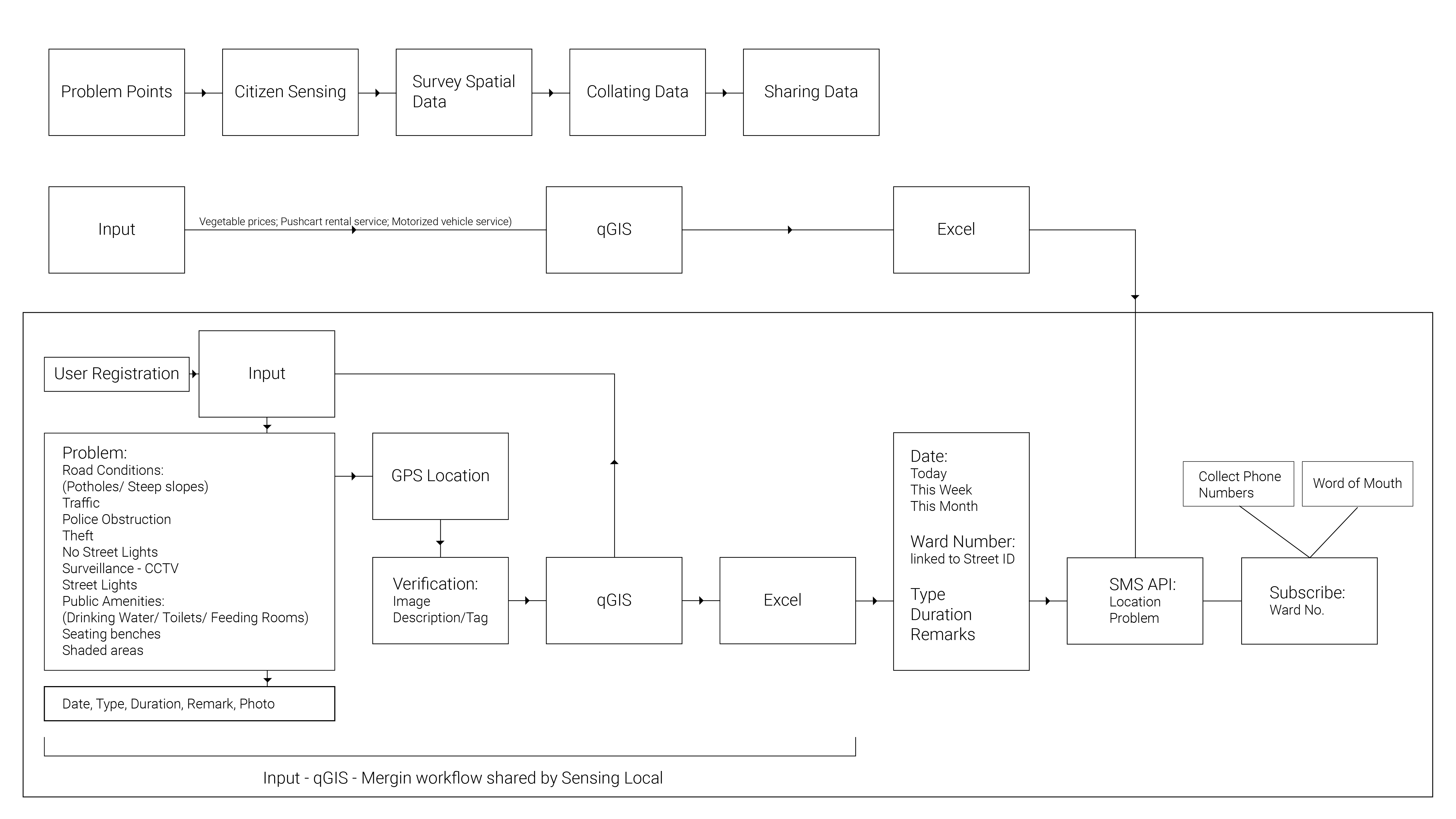
Digital workflow: qGIS; Input; Mergin for Citizen sensing
As long term solutions involve decision-making by development authorities, funding, infrastructural and urban design resolution, simple interventions through citizen sensing can offer quick relief.
Problem points are mapped at a neighbourhood scale. They are time-bound issues for certain categories like police obstruction, traffic, and theft. This information is offered as an SMS/text-to-speech subscription from the database that is created through qGIS and Input app.



Input App: On-ground Surveying
qGIS Webmap: Collating Data
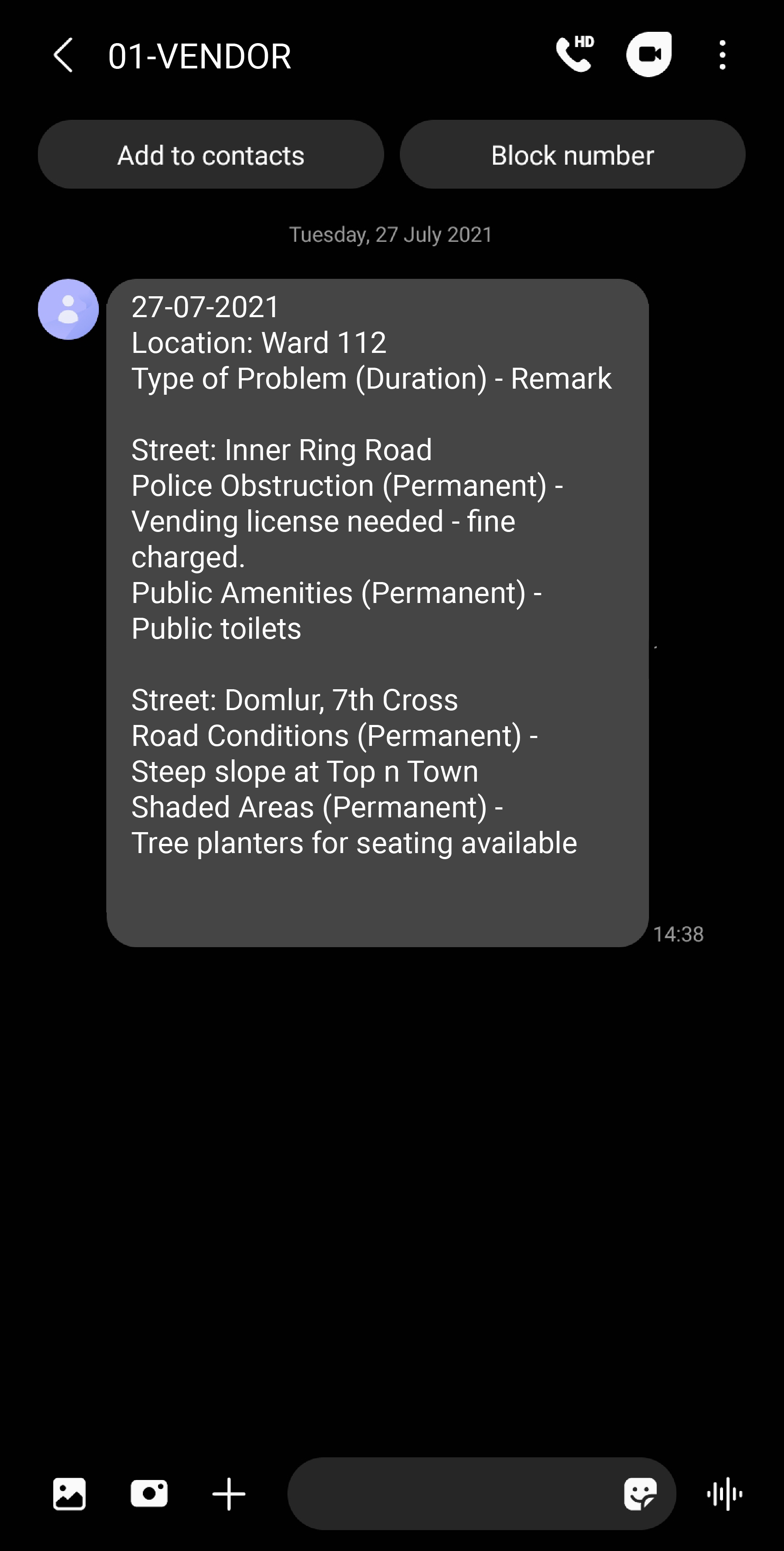
In order to generate relevant text messages, the base data collated via qGIS is export to .csv format in order to filter the data on excel.
Accordingly, a template is developed that includes the filtered date (TODAY) and Ward or Location Data.
A vendor should be able to subscribe to a short number using his ward number to access daily blasts/urgent messages.
Accordingly, a template is developed that includes the filtered date (TODAY) and Ward or Location Data.
A vendor should be able to subscribe to a short number using his ward number to access daily blasts/urgent messages.
Output Text Message: Sharing Location Data
